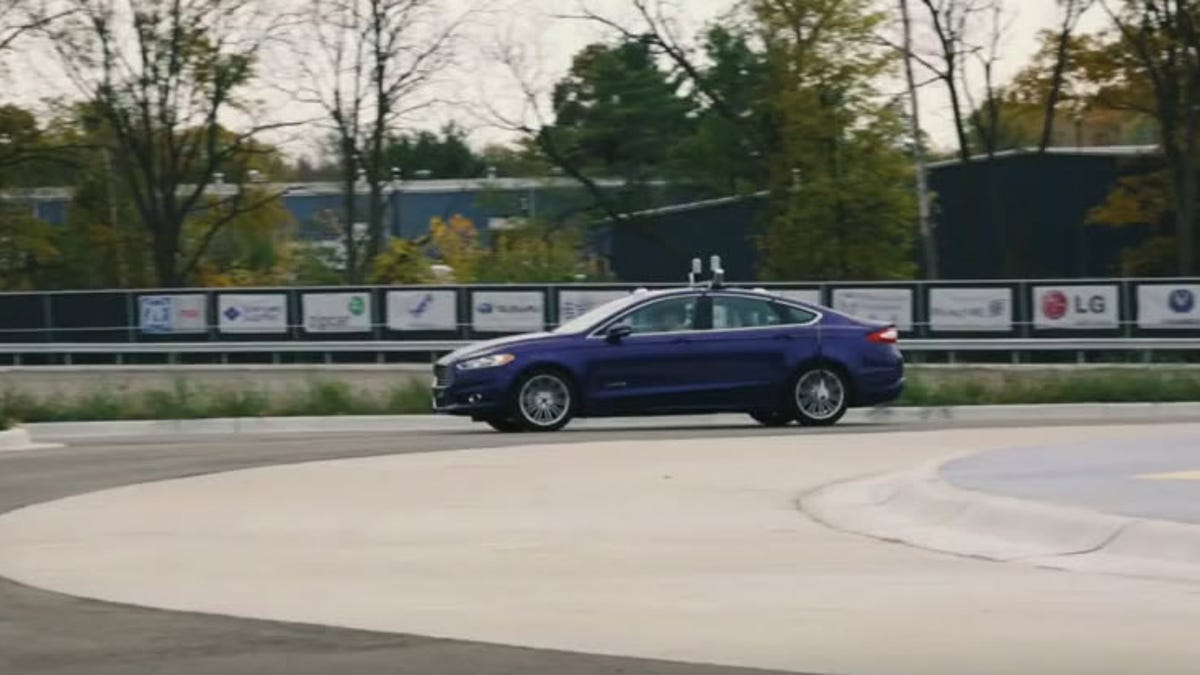Ford revs up self-driving cars in simulated city
At Mcity, autonomous cars can learn to drive before facing the real world. This could help Ford speed up production of such vehicles.

Ford tests a self-driving vehicle in a simulated city.
Ford has begun testing a self-driving car in a simulation designed to work like a real city.
On Friday, the company said it's the first automaker to test autonomous cars in Mcity. Part of the University of Michigan's Mobility Transformation Center, Mcity is a simulated real-world urban environment set up to test self-driving vehicles as a way to speed up their development. The 32-acre test facility opened its doors in July and is funded in part by automotive and tech companies.
Testing self-driving cars is a tricky business. Operating them in a test facility doesn't expose them to all the challenges and hazards of actual cities and roads. At the same time, testers out in everyday traffic are likely to be overcautious and are limited to a certain speeds, which means the technology doesn't get a full workout.
Ford said it's been testing autonomous vehicles for more than 10 years. The company faces competition from other automakers such as Toyota, Audi, Nissan and Tesla as well as tech players such as Google. The goal among several companies is to get self-driving vehicles on the road by 2020. Facing the simulated hazards at Mcity is one way for Ford and other automakers are trying to reach that timeframe.
At the 2015 Consumer Electronics Show, the automaker announced its Ford Smart Mobility Plan, which includes its current lineup of semi-autonomous vehicles and future fully autonomous vehicles. Ford's present semi-autonomous vehicles offer such features as lane-keeping assistance, adaptive cruise control, pre-collision assist, traffic sign recognition and rain-sensing wipers.
The road to fully autonomous cars is paved with challenges though, hence the need for a facility like Mcity.
Mcity confronts cars with everything from simulated pedestrians to stop signs that are faded and covered with graffiti. Autonomous cars also have to face such complications as roundabouts, train tracks, traffic signals and a road section made of a see-through metal grille. Other challenges include streetlights, crosswalks, lane delineators, curb cuts, bike lanes, trees, hydrants, sidewalks, traffic control devices and even construction barriers.
To navigate the streets at Mcity, Ford uses its Fusion Hybrid Autonomous Research Vehicle, which is outfitted with front-facing cameras, radar, ultrasonic sensors and four Lidar sensors and real-time 3D maps of the car's surrounding area. The car also employs algorithms to predict where other vehicles and pedestrians might move. At Mcity, the autonomous research vehicle has tested its ability to handle a variety of surfaces, including concrete, asphalt, simulated brick and dirt.
"The goal of Mcity is that we get a scaling factor," Ryan Eustice, University of Michigan associate professor and principal investigator in Ford's research collaboration with the university, said in a press release. "Every mile driven there can represent 10, 100 or 1,000 miles of on-road driving in terms of our ability to pack in the occurrences of difficult events."

